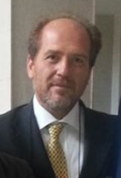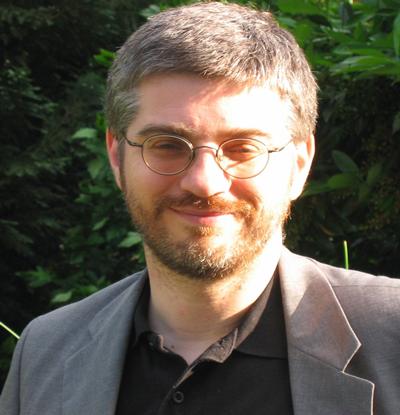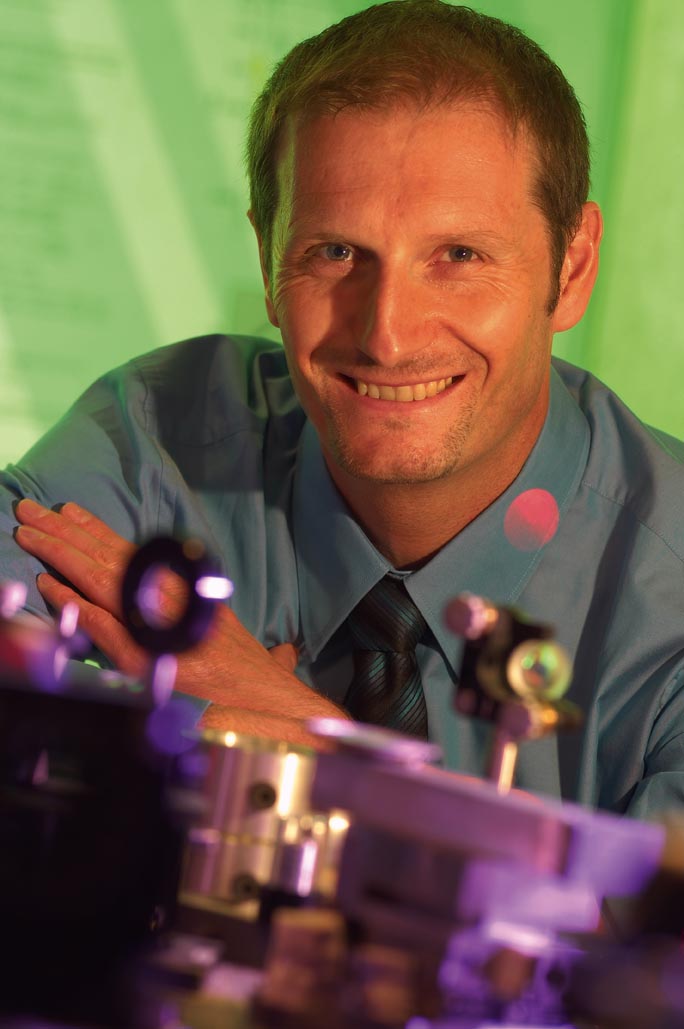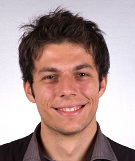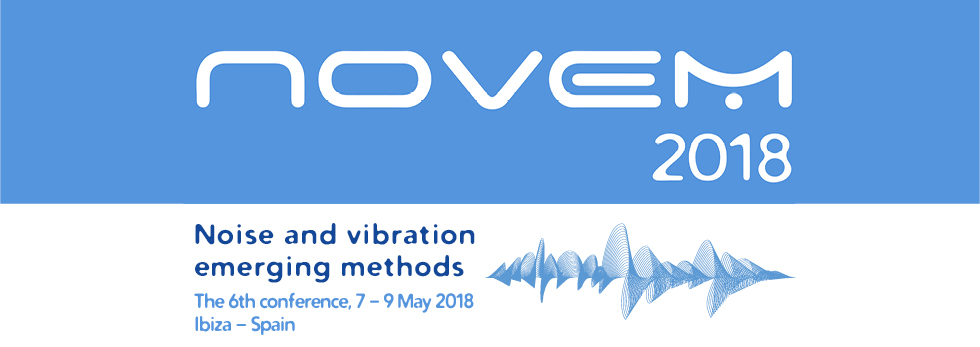
|
|
|
Forum > Forum I : Optical measurement of sound and vibrationForum I: Optical measurement of continuous vibration and sound fieldsOptical methods such as Chladni patterns, Schlieren, holographic interferometry, laser vibrometry have historically played an important role in the visualization of vibration patterns in structures or acoustic wave propagation in transparent media. Modern optical methods potentially capture the whole object of interest in one recording, or the dynamic response as a function of time at one point, or both. The forum will review three modern optical measurement methods of continuous structures and sound fields - Deflectometry, digital holography and digital image correlation.
Chair: Prof. Francesco Franco Ass. Prof. PASTALAB (LABoratory for Promoting experiences in Aeronautical STructures and Acoustics).Dep. of Industrial Engineering, Aerospace Engineering Division.University of Naples Federico II, I-80125, Naples, Italy.
Prof. Franco is active in many fields of mechanical and aerospace engineering such as structural dynamics, structural-acoustics, computational methods in structural-acoustic with reference to low and medium-high modal density problems, experimental techniques and characterization of vibration and noise sources. Up to date, Prof. Franco has been involved in several research projects funded by the European Directorate for the Research and Industrial Development (DG XII) and he has served with different roles: partner, task and work-package leader, member of the steering committee, project coordinator. Prof. Franco has been also involved in many research projects sponsored by industrial companies for the structural-acoustic design and optimization.
Keynote speakers: Prof. Fabrice Pierron, Chair of Solid Mechanics, Head of the Engineering Materials Research Group, Faculty of Engineering and the Environment
Prof. Fabrice Pierron is an expert in the use of novel identification strategies based on spatially-dense (or ‘full-field’) measurements and heterogeneous tests. He has been instrumental in the development of the Virtual Fields Method (VFM) which is gradually becoming an established tool for inverse parameter identification from such measurements. The method is now part of a commercially available software platform, MatchID (www.matchidmbc.com). Prof. Pierron has published more than 100 international journal articles, the vast majority of which are in composites testing and the Virtual Fields Method. He has also co-authored the first book ever on the VFM, released in March 2012. The international impact of his research is recognised through an h-factor of 35 (source: Scopus, September 2017). He was awarded a Royal Society Wolfson Research Merit Award in May 2012 and is currently Editor-in-Chief of Strain (Wiley). He was elected a Fellow of the Society for Experimental Mechanics in 2013. Since his move to Southampton in 2012, Prof. Pierron has secured in excess of £1.7 M through a EPSRC and US Air Force Research grants, see www.photodyn.org. Title: Deflectometry: a tool to measure full-field slopes Abstract: The most well-known full-field deformation technique in mechanical engineering is ‘Digital Image Correlation’ (DIC) which is based on imaging the deformation of a contrasted pattern attached to the test specimen surface. By combining two cameras in a stereo-imaging configuration, the three components of the displacement vector at the surface of the tested sample can be obtained. One of the limitations however is that the resolution is too low to image small surface strains caused by vibrations and therefore, only deformed shapes can generally be obtained (see contribution of Alex Nila to the forum). Deflectometry is an alternative to DIC that allows for the measurement of surface slopes from images of a target (grid or speckle pattern) at the surface of a flat and specularly-reflective (mirror-like) test specimen. The main advantages of the technique is that it measures slopes directly, which for thin plates in bending, is only one differentiation away from curvatures which are proportional to surface strains; and the fact that the technique is extremely sensitive while quite inexpensive. Microradians can be resolved, which lead to surface curvatures of the order of km-1. The main limitations are that it requires a specularly reflective surface (though surface coatings can be applied) and is currently only applicable to flat surfaces, though we are currently working on extending it to moderately curved surfaces. The presentation will focus on the basic principle of the method and show some examples in vibration at both low and high (ultrasonic range) frequencies.
Prof. Pascal Picart, Le Mans Université, CNRS UMR 6613, LAUM, Avenue Olivier Messiaen, 72085 Le Mans Cedex 9, FranceENSIM, Ecole Nationale Supérieure d’Ingénieurs du Mans, rue Aristote, 72085 Le Mans, cedex 09, France
Pascal Picart is a Professor at Le Mans Université, France. He graduated from the École Supérieure d’Optique in 1992 and received his PhD in physics from the University of Paris XI, Orsay, France, in 1995. He joined Le Mans University in 1996. He is the author of 84 journal papers, 13 invited talks, 80 articles in international conferences, 6 book chapters, coordinated 3 books and co-founded one start-up. He is member of OSA, SPIE, EOS and SFO. His research topics are connected with coherent imaging based on digital holography and its application to acoustics, mechanics and fluid mechanics. Title: Full-field investigation of traveling acoustic waves with digital holography Abstract: In the domains of acoustics, vibro-acoustics, vibrations of structures or flow-induced vibrations, Laser Doppler Vibrometry is classically used for dynamics measurements. To get simultaneously a collection of data points at the surface of the inspected vibrating object, multipoint vibrometers were developed. Full-field evaluation can be obtained with coherent imaging based on digital holographic interferometry. Such an approach is well suited because of the high density of measuring points and the reduced measurement time. The use of time-averaging and quasi-time-averaging in digital Fresnel holography was proposed and discussed in the past. However, the stationary regime is a particular case for investigating the structure vibration behavior (propagation of travelling waves), and the characterization of structures under operational or real functioning conditions requires analysis in the time domain. Then, providing a real-time follow-up of the vibration amplitude, whatever the excitation condition, is a challenge for full-field optical metrology. This paper aims at describing recent advances in high-speed coherent imaging based on digital holography; especially we will focus on the use of such an approach to investigate traveling acoustic waves in mechanical structures. Limits are related to few parameters that will be highlighted so as to establish a wish list for the near future
Dr. Alex Nila, LaVisionUK Ltd., 2 Minton Place, Victoria Road, Bicester, Oxon - OX26 6QB, United Kingdom.
Alex Nila, Ph.D. is an application consultant for LaVision UK Ltd. and a product manager of Fluid-Structure Interaction measurement solutions within the LaVision group. He received his master’s degree in Aerospace Engineering from Politehnica University Bucharest, and in 2014, he received his Ph.D. in Mechanical Engineering from Vrije Universiteit Brussel and Ghent University, following his work on experimental investigations of deformable offshore structures using optical measurements. Since joining LaVision, in 2015, Alex has been active in several projects involving the use of Digital Image Correlation (DIC) towards vibration investigations, as well as towards measuring Fluid-Structure Interaction phenomena such as aerodynamic flutter and flow-induced vibrations. Title: Application of 3D Digital Image Correlation for Full-Field Vibration Measurements Abstract: Digital Image Correlation (DIC) is a well-established non-intrusive, full-field technique that is extensively used for measuring surface displacement and displacement derivatives such as material strain. The application of this technique has seen a considerable raise in popularity over the course of the last decade, with an increasing array of applications focusing particularly on material characterization. However, the nature of this measurement technique also lends itself to applications involving vibration analysis, even though the full capabilities of DIC in this filed have yet to be extensively explored. In particular, three dimensional or Stereoscopic DIC (3D-DIC) measurements, which are capable of retrieving all three components of surface displacement and its position in a full-field instantaneous snapshot, are increasingly used for the recovery of natural frequencies and of operational deflection shapes or mode shapes. While it has been already shown that, in comparison with more traditional vibration measurement techniques, such as laser Doppler vibrometry (LDV), the out-of-plane displacement component resolution is lower for DIC, the advantages of the latter include such features as the applicability to tests where rigid body motions are present, and it’s full-field nature that can deliver instantaneous snapshots of the displacement field, whilst at the same time, providing further output such as strain distribution. In the present study, these advantages and limitations of 3D DIC measurements for vibration analysis are explored and further analysed. Several applications describing the applicability of 3D DIC towards vibration analysis and experimental modal analysis, are detailed herein. Furthermore, the advantages of DIC compared to classical sensor-type measurement techniques are discussed, while special attention is given to its applicability in fluid-structure interaction studies.
|
| Online user: 1 | RSS Feed |

|
